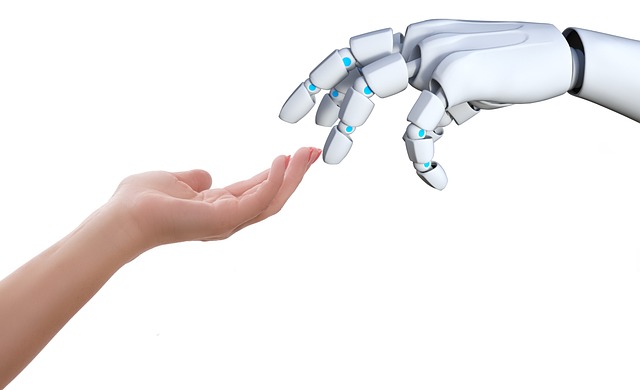In today’s competitive marketplace, companies are turning to robotics, artificial intelligence, and automation as a means to streamline processes, reduce costs, and improve overall performance. Central to this transformation is the concept of human‑robot interaction—a dynamic partnership that blends human judgment with robotic precision. By mastering this relationship, businesses can create adaptive, resilient systems that respond to changing demands while maintaining a high level of control over outcomes.
The Evolution of Human‑Robot Interaction in Business
The earliest industrial robots appeared in the 1960s as rigid, pre‑programmed machines that performed repetitive tasks on assembly lines. As technology progressed, so did the complexity of interactions between humans and machines. Modern human‑robot interaction extends beyond simple task execution; it involves collaborative decision‑making, real‑time feedback, and adaptive learning. This evolution has been driven by advances in machine vision, natural language processing, and sensor fusion, enabling robots to understand context and work safely alongside people.
From Automation to Collaboration
Initially, automation implied separation—machines operated in isolation from human operators. The contemporary paradigm, however, emphasizes collaboration. Human‑robot interaction is no longer a matter of co‑existence but of co‑operation, where each party complements the other’s strengths. This shift requires a redesign of workflow architectures, safety protocols, and user interfaces to accommodate seamless cooperation.
“Collaboration is the new frontier of automation,” said a leading robotics researcher, underscoring that the future of production lies in shared intelligence between humans and machines.
Key Benefits of Human‑Robot Interaction
- Enhanced Efficiency: Robots perform high‑precision tasks at speeds far beyond human capability, freeing employees to focus on higher‑level activities.
- Improved Accuracy: Sensor‑driven robots consistently deliver repeatable outcomes, reducing defect rates in manufacturing and data entry.
- Greater Safety: By delegating hazardous tasks to robots, businesses can protect workers from injury and comply with stringent occupational standards.
- Accelerated Innovation: Collaborative robots act as platforms for rapid prototyping, allowing firms to test new processes without significant upfront investment.
Implementing Human‑Robot Interaction: A Control Perspective
Control theory provides a framework for designing systems where robots and humans exchange information in a stable, predictable manner. Key principles include:
- Closed‑Loop Feedback: Continuous monitoring of performance metrics ensures that robotic actions remain aligned with human expectations.
- Safety‑First Control Laws: Algorithms prioritize human presence by modulating speed and force when proximity thresholds are crossed.
- Human‑Centric Interfaces: Voice commands, gesture recognition, and intuitive dashboards reduce cognitive load and streamline collaboration.
Designing for Seamless Interaction
Creating an effective human‑robot partnership demands attention to ergonomics, communication protocols, and reliability. Engineers must define clear handover points where tasks transition from human to machine and vice versa. This process often involves iterative testing, user feedback, and fine‑tuning of control parameters to achieve smooth, error‑free operation.
Real‑World Applications
Across industries, human‑robot interaction is redefining workflows:
- Manufacturing: Collaborative robots (cobots) assist workers in assembling complex components, reducing cycle times.
- Healthcare: Robots aid surgeons during minimally invasive procedures, providing real‑time imaging and instrument guidance.
- Logistics: Autonomous guided vehicles work alongside warehouse staff to transport goods, optimizing route planning.
- Retail: Service robots help customers locate products and process transactions, freeing staff for personalized assistance.
Ethical and Workforce Considerations
While human‑robot interaction delivers measurable benefits, it also introduces new ethical dilemmas and workforce challenges. Companies must address questions of job displacement, data privacy, and decision accountability. A proactive strategy involves:
- Reskilling Programs: Training employees to operate, program, and maintain robotic systems ensures they remain integral to value creation.
- Transparent Governance: Clear policies on data usage and algorithmic decision‑making build trust among workers and customers.
- Human‑In‑The‑Loop Design: Maintaining human oversight over critical decisions mitigates risks associated with autonomous systems.
Building a Culture of Collaboration
Success in human‑robot interaction depends on organizational culture. Leadership must champion cross‑disciplinary collaboration, encouraging engineers, operators, and managers to co‑design solutions. Open communication channels and shared performance metrics foster a sense of ownership and collective responsibility.
Future Trends in Human‑Robot Interaction
The trajectory of human‑robot interaction is poised to accelerate, driven by three key trends:
- Artificial Intelligence Integration: Machine learning models will enable robots to predict human intentions, adapt to new tasks, and improve safety autonomously.
- Adaptive Control Systems: Feedback loops will evolve to adjust control parameters in real time, ensuring optimal performance under varying conditions.
- Shared Autonomy Platforms: Hybrid systems where control authority oscillates between human and machine will become standard, blending best practices from both domains.
Anticipating Disruption and Managing Change
As capabilities expand, businesses must anticipate disruptions in supply chains, skill requirements, and regulatory frameworks. Continuous learning, scenario planning, and agile governance structures will enable firms to adapt quickly, turning potential risks into opportunities for differentiation.
Conclusion
Human‑robot interaction represents a paradigm shift in how organizations conceive control, efficiency, and innovation. By integrating robotics and artificial intelligence into everyday processes, businesses can achieve higher precision, reduced downtime, and safer work environments. However, the true advantage lies in the harmonious collaboration between human intuition and robotic consistency. Firms that adopt a thoughtful, control‑oriented approach—grounded in safety, transparency, and continuous improvement—will not only optimize business efficiency but also cultivate a resilient, future‑ready workforce. The challenge is not merely to automate, but to co‑create value with machines that learn from and enhance human capabilities.




